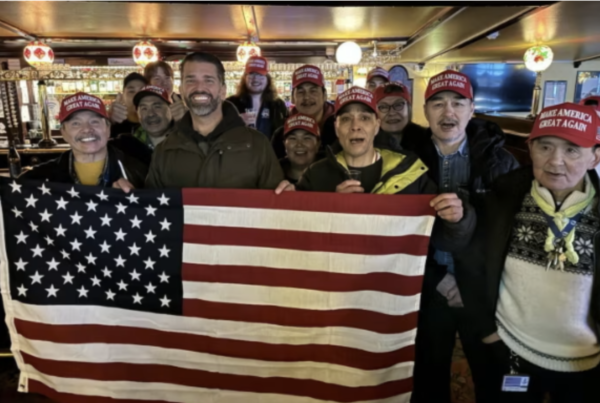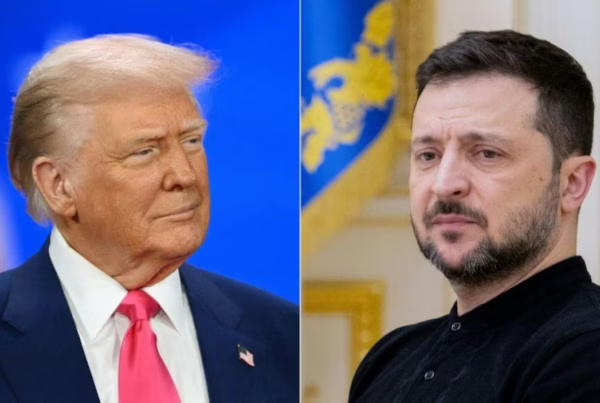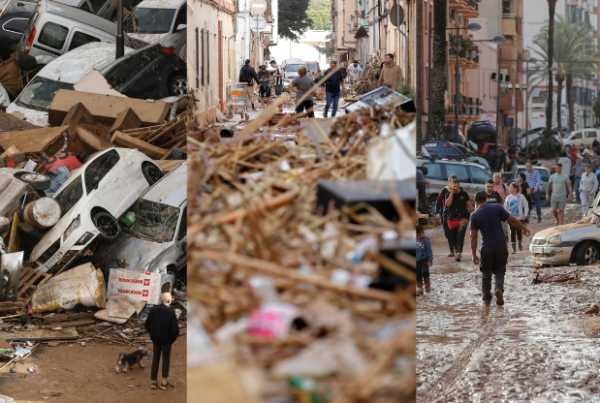By Mark Narusov
Correction: The previous version of this article incorrectly stated that Trump’s Iran speech would happen on Thursday, October 12th. In fact, the source article explicitly stated that the event was *tentatively* scheduled for that date, which I should have indicated. The speech is going to happen today, on Friday October 13th. I apologize for the mistake.
According to multiple reports, President Trump has set his mind on decertifying the JCPOA, colloquially known as the Iran nuclear deal, this Friday, 2 days before the deadline on October 15th. The very first thing that should be mentioned is that the obligation to decide on certification is not part of the nuclear deal itself. It was imposed on the president as part of a bill officially named the Iran Nuclear Agreement Review Act (INARA), more commonly referred to as the Corker-Cardin law after its main sponsors.
Under this legislation, passed 98-1 in the Senate and 400-25 in the House, every 90 days the president is required to certify that 4 statements (d-6-A) hold true. First, that “Iran is transparently, verifiably, and fully implementing the agreement, including all related technical or additional agreements”. Second, that “Iran has not committed a material breach with respect to the agreement [the nuclear deal] or, if Iran has committed a material breach, Iran has cured the material breach”. Third, that “Iran has not taken any action, including covert action, that could significantly advance its nuclear weapons program”. And finally, that “suspension of sanctions related to Iran pursuant to the agreement is (I) appropriate and proportionate to the specific and verifiable measures taken by Iran with respect to terminating its illicit nuclear program; and (II) vital to the national security interests of the United States”. Quite a few reporters and columnists (and apparently even John Kerry) have not read this piece of text before writing on the issue, suggesting that the certification process is solely about Iranian technical compliance to the JCPOA. As can be seen from the legislation, Trump can — and probably will — decertify the JCPOA as inconsistent with the Corker-Cardin bill solely on the assertion that he does not believe it serves American national interests, as required by the 4th condition quoted above. Or he might choose to also emphasize ballistic missile tests that could be interpreted to have been a violation of a “related agreement” like the UN Security Council Resolution 2231 that endorsed the JCPOA and “called upon” Iran “not to undertake any activity related to ballistic missiles designed to be capable of delivering nuclear weapons” (p.99). In either case, Iranian non-compliance with the deal itself is not a necessary condition for Trump’s decertification of the JCPOA. According to the law, unless the President is able to certify before the deadline that all of the 4 statements quoted above hold true, within the next 60 days Congress automatically gets the right to re-impose the so-called “qualifying legislation”, the nuclear-related sanctions, through a vote without the possibility of a filibuster, meaning that a simple majority is required for the bill to pass in the Senate. The original lifting of these sanctions — and the subsequent regular waiving thereof — constitutes the principal part of the US’ side of of the bargain with Iran, as stipulated in Annex 2 (pp. 8-15) of the JCPOA. A decision by Congress to reinstate the sanctions would constitute a de facto withdrawal from the nuclear deal. Decertification on its own, however, leaves the US’ status as its signatory intact. For what purpose, then, is Trump planning to decertify?
The administration has adopted what the Iran hawk Mark Dubowitz and the nuclear proliferation expert David Albright have termed the “decertify, waive, slap and fix” strategy — judge the JCPOA as inconsistent with the INARA conditions for certification, get Congress to waive the nuclear-related sanctions to safeguard the deal for a certain period of time, and slap Iran with non-nuclear sanctions to build enough leverage vis-à-vis the other signatories of the agreement to, in the end, fix the deal.
The administration is motivated by 3 principal problems with the JCPOA to strive for a better agreement with Iran. First, the regulations imposed on the Iranian regime’s nuclear program are not permanent. The so-called “sunset provisions” lift limits on the most important aspects of the Iranian nuclear program after 15, and in some cases 10, years counting from Implementation Day. For example, the restriction (p.15) on the permitted stockpile of uranium, as well as its enrichment, is set to expire in 15 years, while the limit on the nature and number of centrifuges permitted at the Natanz enrichment facility is nullified (p. 9) after just 10. The Institute for Science and International Security estimates that because of these 2 and other (p.3) factors, the “breakout time” — “the time required to produce enough weapons-grade uranium (WGU) for one nuclear weapon” — will drop from 7-13 months during the first 10 years since Implementation Day to just 3 months after 15 years and further to just “a few days” after 18 to 20 years. Because of this, John Hannah, former Vice President Cheney’s national security advisor, compared this situation to a “ticking time bomb”. The Trump administration essentially agrees. Second, the JCPOA does not place restrictions on Iran’s ballistic missile program, development of a delivery system being an essential component of any aspiration to become a nuclear state. Third, the administration believes that the JCPOA’s provisions about IAEA’s inspections of military sites stipulated in the Additional Protocol — International Atomic Energy Agency is the UN’s nuclear watchdog tasked with monitoring the nuclear agreement — are weak and inadequate. As US ambassador to the UN Nikki Haley said in a speech to the American Enterprise Institute, “the biggest concern is that Iranian leaders – the same ones who in the past were caught operating a covert nuclear program at military sites – have stated publicly that they will refuse to allow IAEA inspections of their military sites”.
There are reasons to suspect that the US will not be alone in demanding an improvement of the nuclear agreement as it is now. French president Emmanuel Macron is willing to address the sunset problem as well as Iran’s ballistic missile program, seemingly contradicting his ambassador to the US. Moreover, according to 2 American diplomatic sources, London is also ready work on the deal’s flaws. All of the signatories of the JCPOA except the US, though, — Russia, China, Iran, Germany, Britain, France and the EU — are unequivocal in their commitment to the core of the deal, at least in public. They all may be breaking through an open door. Nikki Haley admitted that the nuclear agreement is front-loaded and that scrapping it altogether is not an appealing option: “the deal was constructed in a way that makes leaving it less attractive. It gave Iran what it wanted [sanctions relief] up-front, in exchange for temporary promises to deliver what we want”. Besides, there is a significant degree of intra-administrational unity behind the decertify and fix strategy, and everyone who matters except for Trump himself — Mattis, Haley, McMaster, and Tillerson — are on the record as being in favor of sticking with the core of the Iran deal. So far, Trump has not acted in defiance of the counsel of his national security team in the realm of foreign policy and is ultimately willing to give the decertify and fix strategy a chance. In addition, the administration reportedly values a “layer of transparency” that is guaranteed by the JCPOA.
All available evidence shows that Congress has no political will to go against the Trump administration and blow up the JCPOA by reinstating nuclear-related sanctions in the 60 day period. As Mark Dubowitz explained to FT, “No one gets to the right of [Tom] Cotton on Iran in the US Senate. <…> If he is willing to give time for the administration to work on diplomacy with Europeans and not reinstate sanctions this time around [and he is], it’s hard to imagine anyone else in Senate successfully pushing for reinstatement.”
According to my own estimation, there are roughly 4 principal arguments in circulation against the Iran approach of the Trump administration. First, critics of the current president argue that the deal is working. On August 27th, the IAEA certified in its quarterly report that Iran is complying with the 2015 agreement, as it had done 7 times before since Implementation Day. The stockpile of low-enriched uranium (LEU) and the number of centrifuges is under the limit permitted by the JCPOA. Second, they argue that there is no tangible alternative to a deal that was negotiated after years of crippling sanctions. Colin Kahl alleges that the leverage the US now has is simply incomparable to that it had in 2013, when the official negotiations started. As he put it in a Foreign Policy article, “it is literally insane to believe that it is possible to produce 150 percent of the current deal with 50, 70, or even 99 percent of the leverage the United States possessed in 2015. It simply ignores the laws of diplomatic physics.” Third, critics contend that pressuring Iran into reopening negotiations on its nuclear program would have massive costs for American credibility. As Max Boot phrased it, “It would send a terrible signal to other states that in the future might be interested in concluding an arms control treaty with the United States if Washington were to abrogate a treaty simply because of a change of administration”. Wendy Sherman, former Under Secretary of State for Political Affairs, recently argued that reopening the JCPOA would have severe repercussions for any future crisis where the United States would need cooperation from its European allies. Finally, the naysayers contend that Trump’s approach would inadvertently increase the influence of Iran, China and Russia by driving a wedge in the transatlantic alliance that only needs reaffirmation in light of Trump’s past comments on NATO.
The camp of Iran hawks is divided on the administration’s decertify and fix strategy. Headed by former US ambassador to the UN John Bolton, the “hardline” wing argues that it is virtually pointless to try to build on the basis of the existing nuclear agreement. As Bolton writes: “A conceivably acceptable Iran agreement would require truly intrusive international inspections, as far as imaginable from those permitted under Obama’s deal. Iran (like North Korea or any authoritarian society) could simply not accept the kind of international presence required to prove compliance. So doing would undermine the regime itself. Fixing the deal is out of the question”. His proposed plan for withdrawing from the JCPOA was signed by 45 national security experts, many of whom served in senior positions in prior Republican administrations. The actual prevalence of this strategy is, as of now, limited, while the “moderate” faction within the Iran hawk community is carrying the day. The latter articulate 4 arguments in support of Trump’s strategy. First, they argue that Iran has not, in fact, been complying with the letter of the JCPOA. According to the testimony of David Albright, president of the Institute for Science and International Security, as of the 5th of April, Iran “ha[d] twice had more than its heavy water limit of 130 metric tonnes inside Iran, as has been noted by the IAEA in its quarterly reports”(p.4). Other violations included interpreting the “roughly 10” operating IR-6 centrifuges allowed by the deal to mean 15 (p.6), and, most surprisingly of all, 32 attempts to illegally buy nuclear technology. As Mark Dubowitz put it, “… we know that the Iranians violate incrementally, not egregiously, even though, over time, the sum total of the incremental violations is always egregious”. Second, they allege that the IAEA has become politicized and too vested in the deal to properly monitor it. IAEA Director General Yukiya Amano has admitted that he can’t verify Section T of Annex I (p.27) that deals with development of a nuclear explosive device, in part due to the IAEA’s inability to inspect Iranian military sites without prior substantiated suspicion of wrongdoing, something that the IAEA doesn’t want to demand anyway. Why? “If they want to bring down the deal, they will,” an IAEA official told Reuters, referring to the US leadership. “We just don’t want to give them an excuse to.” Third, they judge the inherent shortcomings of the JCPOA, as described above, to be unsustainable in the long term. Finally, they argue that it is indeed possible to “fix” the nuclear agreement by forcing the Iranian regime to the negotiating table through economic sanctions and a solid strategy of geopolitical containment. According to the logic of this argument, while the Obama administration implemented a campaign of severe economic pressure, it allegedly acquiesced to Iranian geopolitical interests as part of a wider détente with the Islamic Republic in the Middle East. Hence, the regime was able to exploit the Obama administration’s unwillingness to use force and pocket concession after concession during the 2 year period of official negotiations. Defenders of the current administration argue that Trump’s bellicose posture has already produced results as Iran has recently communicated via multiple channels its willingness to begin negotiations on its ballistic missile program.
It is possible, of course, that Trump’s unpredictability will be manifested once more and that tomorrow he will deliver a speech announcing a complete withdrawal from the JCPOA, or indeed a recertification of Iranian compliance with the INARA conditions. Judging by publicly available information, however, that remains highly unlikely.
Photo: indianewengland.com
Other posts that may interest you:
- The Trouble with ‘Ecocide’
- Carbon dioxide removal – hit or miss?
- Local Victories for Turkish Opposition — A Sign of Hope?
- Are France and Japan a Mismatch Made in Heaven?
- A Reflection on Dark Tourism
Discover more from The Sundial Press
Subscribe to get the latest posts sent to your email.





Join the discussion No Comments